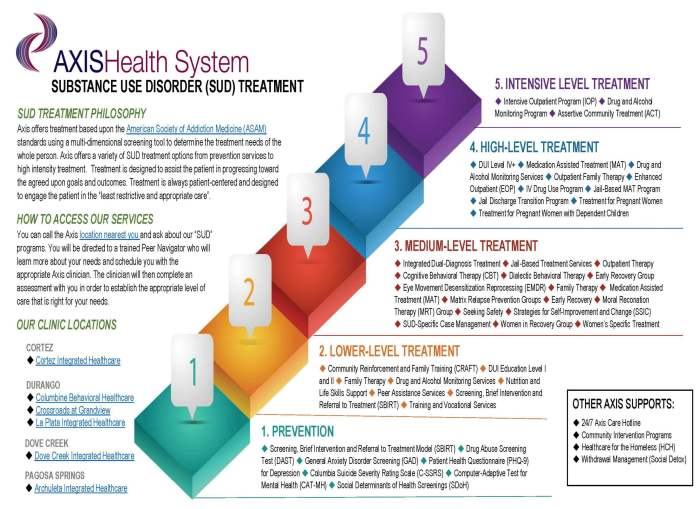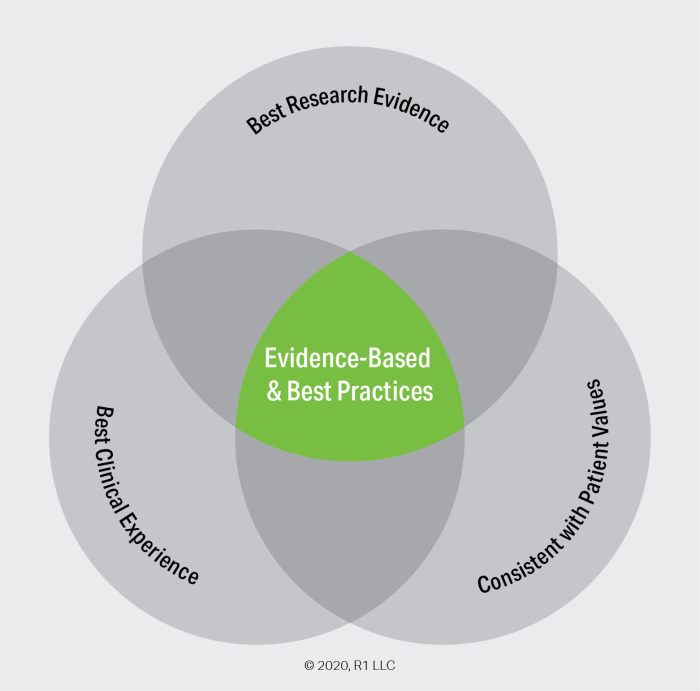SUD treatment, a multifaceted approach to addressing Substance Use Disorder, offers hope and healing to individuals struggling with addiction. Understanding its prevalence, causes, and consequences is crucial for effective interventions.
The journey of SUD treatment involves various stages, from assessment and diagnosis to rehabilitation and relapse prevention. Evidence-based practices like cognitive-behavioral therapy and motivational interviewing have proven successful in guiding individuals towards recovery.
Overview of SUD Treatment

Substance Use Disorder (SUD) is a complex condition that involves the compulsive use of drugs or alcohol despite negative consequences. It is characterized by a pattern of compulsive drug or alcohol use that interferes with daily life, relationships, and health.
SUD is a serious problem that can lead to addiction, overdose, and even death.
The prevalence of SUD varies depending on the substance, but it is estimated that over 20 million Americans suffer from a SUD. The causes of SUD are complex and include both genetic and environmental factors. SUD can lead to a variety of consequences, including health problems, legal problems, and financial problems.
Treatment Approaches for SUD
There are a variety of different SUD treatment approaches, including:
- Inpatient and outpatient programs: Inpatient programs provide 24-hour care in a residential setting, while outpatient programs allow individuals to live at home while attending treatment sessions.
- Medication-assisted treatment: Medication-assisted treatment (MAT) uses medications to help reduce cravings and withdrawal symptoms.
- Behavioral therapies: Behavioral therapies, such as cognitive-behavioral therapy (CBT) and motivational interviewing (MI), help individuals change their thoughts and behaviors related to substance use.
- Support groups: Support groups, such as Alcoholics Anonymous (AA) and Narcotics Anonymous (NA), provide a safe and supportive environment for individuals in recovery.
Stages of SUD Treatment
SUD treatment typically involves several stages:
- Assessment and diagnosis: The first step in SUD treatment is to assess the individual’s needs and make a diagnosis.
- Detoxification: Detoxification is the process of safely withdrawing from drugs or alcohol.
- Rehabilitation: Rehabilitation is the process of learning new coping mechanisms and life skills to help individuals maintain sobriety.
- Recovery and relapse prevention: Recovery is an ongoing process that involves maintaining sobriety and preventing relapse.
Evidence-Based Practices in SUD Treatment
There are a number of evidence-based practices that have been shown to be effective in treating SUD, including:
- Cognitive-behavioral therapy (CBT): CBT helps individuals identify and change their negative thoughts and behaviors related to substance use.
- Motivational interviewing (MI): MI is a counseling approach that helps individuals explore their ambivalence about change and make decisions about treatment.
- Contingency management: Contingency management uses rewards to reinforce positive behaviors, such as abstinence from drugs or alcohol.
Challenges in SUD Treatment
There are a number of challenges associated with SUD treatment, including:
- Lack of access to treatment: Many people who need SUD treatment do not have access to it due to cost, insurance coverage, or transportation issues.
- Stigma and discrimination: Stigma and discrimination can prevent people from seeking SUD treatment.
- Relapse and recidivism: Relapse is common in SUD treatment, and many people who relapse go on to experience recidivism (repeated relapse).
Role of Technology in SUD Treatment

Technology is playing an increasingly important role in SUD treatment, including:
- Telehealth and virtual therapy: Telehealth and virtual therapy allow individuals to access SUD treatment from the comfort of their own homes.
- Mobile apps and wearables: Mobile apps and wearables can help individuals track their progress, stay connected with support groups, and access resources.
- Digital interventions: Digital interventions, such as online therapy and self-help programs, can provide additional support to individuals in SUD treatment.
Best Practices for SUD Treatment

Best practices for SUD treatment include:
- Patient-centered care: Patient-centered care focuses on the individual’s needs and preferences.
- Collaboration and coordination of services: Collaboration and coordination of services between different providers can help ensure that individuals receive the best possible care.
- Long-term follow-up and support: Long-term follow-up and support can help individuals maintain sobriety and prevent relapse.
End of Discussion
SUD treatment faces challenges such as stigma and lack of access, but technological advancements and best practices are emerging to enhance its reach and effectiveness. By embracing a patient-centered approach, collaborating with healthcare providers, and advocating for policy changes, we can create a supportive environment that fosters long-term recovery and well-being for those affected by SUD.
FAQ Section
What is the most effective treatment for SUD?
There is no one-size-fits-all approach, but evidence-based therapies like cognitive-behavioral therapy and motivational interviewing have shown promising results.
How long does SUD treatment typically take?
The duration of treatment varies depending on individual needs and the severity of addiction, but it often involves multiple stages and ongoing support.
What are the common challenges faced in SUD treatment?
Stigma, lack of access to care, and relapse are among the challenges that can hinder recovery efforts.